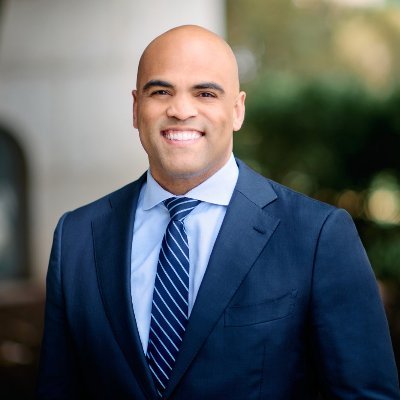Nice to be recognized as a leading innovator.
The practice of using plumbing to track and prevent disease isn’t new. A series of cholera outbreaks in the mid and late 1800s prompted many cities, including London, Boston, and Chicago to install sewer systems in the first place. In the 1940s, health authorities began tracking polio in wastewater. But after the disease declined to be a major threat in the US, wastewater surveillance became mostly limited to academic research studies. Covid changed that: Today, about 40 percent of the country lives in an area where their feces are monitored for the coronavirus. Several European countries, including Finland, Spain, and the Netherlands, established national wastewater monitoring programs not long after the pandemic hit.
In March, I visited a Houston wastewater plant to see how it works. The city’s Covid surveillance program is considered among the most impressive in the country, in part because of the sheer scale of it: Officials are tracking Covid for its more than 2 million poopers across 39 wastewater treatment plants—more plants than in New York City, Los Angeles, and Chicago combined. It helped that Houston is home to some of the world’s leading statistical and epidemiological experts who “dropped everything” to establish the wastewater program, says Loren Hopkins, a statistician at Rice University and Houston’s chief environmental science officer. The effort has been so effective (and in a red state, no less) that the Centers for Disease Control and Prevention has tapped the city to help develop trainings for the rest of the country.
On a Tuesday morning, I join Houston Public Works managing engineer Walid Samarneh to watch as his designated “sample guy,” Nadeem Rehan, collects a jug of murky, slightly chunky sewer water as it is being pumped into the plant for treatment. If you’ve ever had your toilet back up, you’d be familiar with the smell—organic, like lake water, with hints of acidity and eggs. He pours the water into two bottles, one to be transported to the Houston Health Department and the other to Rice University for testing. Then, as I see at Rice, a cheerful team of scientists preps the sample for a PCR-based test (similar to the ones run on our nasal swabs) to deduce the concentration of virus in the sample—and by extension, the community. By Monday, statisticians will have analyzed the data for each wastewater treatment plant and uploaded it to a public dashboard where Houstonians can see the Covid trends in their area. It’s a bit like checking the weather, but for Covid.
But what I found most compelling about Houston’s program is how city officials have used its sewer data to fight the virus. For one, explains Dr. David Persse, the city’s chief medical officer, it’s allowed hospitals to know when to expect a surge in patients, and when to avoid scheduling elective surgeries that would otherwise limit capacity. The city also conducts “pinpoint testing” at sewers just outside of schools, jails, homeless shelters, and assisted living facilities. (This requires a two-person team to physically visit each location and in some cases hoist sampling devices from cockroachey manholes.) Particularly in the early days of Covid, this site-specific testing served as a warning system: If the virus appeared in a nursing home’s wastewater, Persse says, “[we’d] test everybody, all the employees, residents—bada bing, we found it. And then they could control it.” According to Persse, just 8.4 percent of Covid deaths in Houston have been related to long-term care facilities, compared to an estimated 23 percent nationally.
Some cities, Houston included, are already relying on wastewater to track RSV and flu outbreaks, too. “We started seeing the flu since like late summer, earlier than normal,” says Raul Gonzalez, who runs a surveillance program in Hampton Roads Sanitation District in Virginia. “It was great to be able to say, ‘Hey, look, the flu is already on the rise—it’s earlier than it usually is.’” It’s also possible to monitor sewage for rare but known threats like hepatitis A or dengue. (In early 2022, officials in London, for instance, discovered the first known case of polio in the country since 1984 with wastewater infrastructure designed for Covid. Similarly, last summer, at some sites in the San Francisco Bay Area, researchers spotted Mpox in sewage—before there’d been any reported clinical cases.)
And then there’s the holy grail of wastewater surveillance: “Pathogen X,” a term epidemiologists use to refer to the next virus with pandemic potential. For now, this research is still in preliminary stages, says Lauren Stadler, an environmental engineer at Rice University who is working to develop systems to detect emerging pathogenic threats to humans. But scientists say it could work by placing “sentinel” sewage sampling sites by places where threats may first appear, like international airports, zoos, or livestock and poultry farms.
See here for previous wastewater blogging. The “in a red state, no less” comment made me grind my teeth – seriously, we’re a big Democratic city with a world-class medical center, maybe you’ve heard of us? – but the rest of the story is good. We have used the wastewater to track mpox in addition to RSV and the flu, and I’m sure there are other use cases out there. I knew of some of the things Houston had done in response to the data, to mitigate the spread of COVID, but I hadn’t known we had done such a good job controlling the spread at long-term care facilities. Kudos to all for that. Read the rest and be glad we had the right people with the right expertise to do all this good work.



















